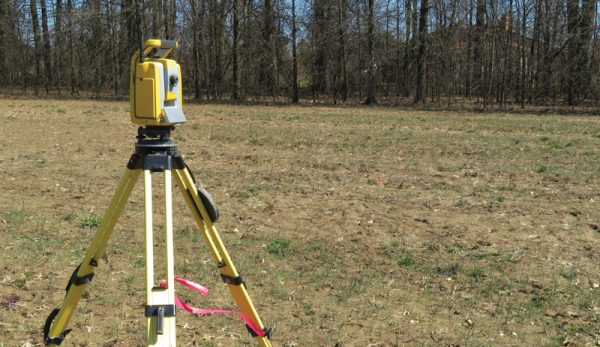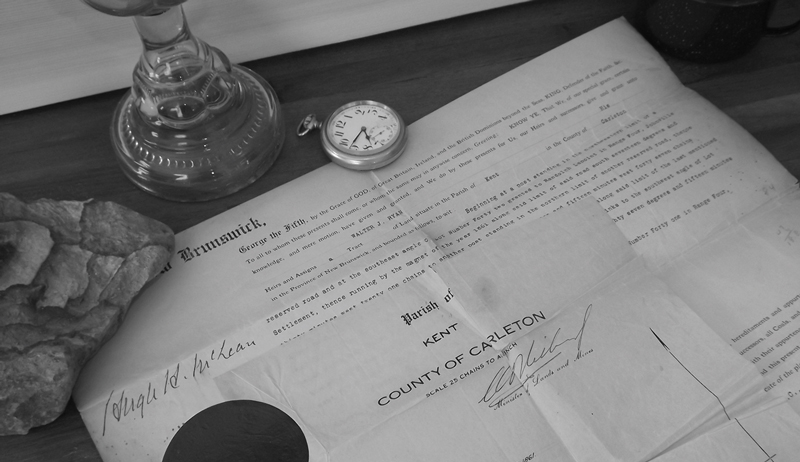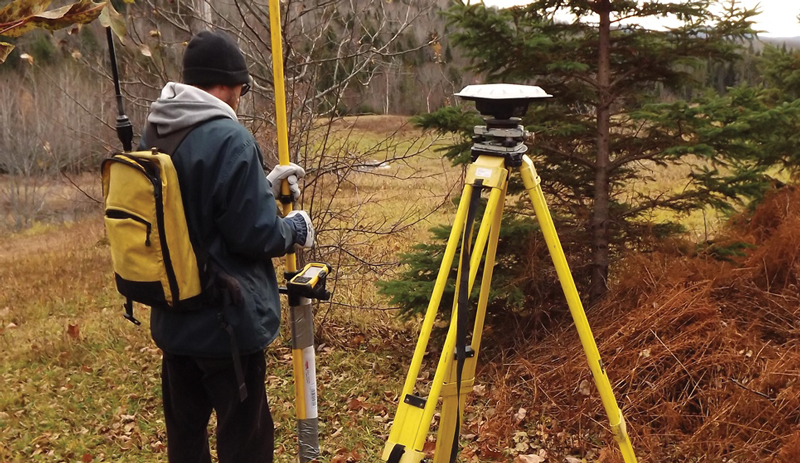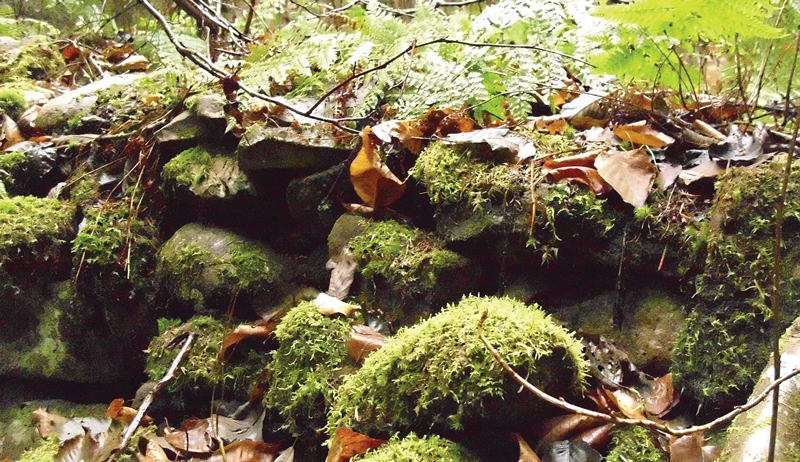
Owning a few acres in a rural setting is a dream come true for many modern homesteaders. With a bit of land, you can run livestock, grow crops or just enjoy the view.
But that piece of heaven comes with myriad responsibilities, one of which is keeping the property boundaries straight.
Are you unsure of your own land limits? If so, then it’s time to be proactive and have a property survey done to avoid potential problems.
Acres?
In a perfect world, all land parcels would be squares with equal sides. But in reality, land boundaries can be as twisted as coil springs and downright exasperating.
In the original surveys of 150 to 200 years ago, the lots were neatly divided with 100 acres being the most common. Over time, all these carefully measured acres were broken up or added to multiple times.
And just what is an acre? You’ll often encounter this term, but few people know it measures 66 by 660 feet, or 43,560 square feet. Another way of thinking is that an acre is roughly the size of a professional football field, more or less.
Read more: Ready to farm but not ready to buy land? You can lease land to get started sooner!
Prep Work
Before a survey, you’ll need the deed to the parcel of land, which outlines the property boundaries.
If yours isn’t handy, you aren’t alone. Most folks can find their tractor manuals, the fridge warranty and their firstborn’s first-grade report card but not their land deeds.
If your deed isn’t where it should be, check the last tax bill you received for the property ID number and lot number. Every piece of ground has an identity number for the county to record who owns it. With this number, you can obtain a copy of the deed at the register of deeds office located at the county seat, which records all land transactions.
This information will be on computer files and can be quickly accessed for a fee. Be sure to follow all the regulations in your area when dealing with any land issues, as laws can vary. Do your homework.
Land deeds may have any number of clauses such as right-of-ways and easements. An easement is an agreement dealing with something that came with the property before you owned it. The deed should should contain a thorough explanation.
Easements can be tricky surprises lying around for decades, then suddenly appearing.
A right-of-way might be access at a predetermined point permitting another party to reach a piece of adjacent property. Underground utility lines, old government highway allowances or forest service access roads run all over the countryside.
All too often landowners won’t even know about any of these potential problems.
Rods & Chains
Older land deeds can be difficult to interpret, as they are sprinkled with archaic industry terms. A licensed surveyor can quickly decipher and explain this jargon, which can still be found occasionally on today’s deeds.
I have a copy of the original survey of my land from the late 1850s. It speaks of rods (16 1⁄2 feet) and chains (66 feet) and minute of angle for the year.
Rods and chains were lengths of measurement used by early surveyors. The chain was a real chain of 100 links. People pulled chains tight along a compass line to lay out millions of acres.
This weathered document also indicates roads long since gone, along with the favorite of everyone who has any experience with old deeds: the classic “large tree” as a corner marker.
Read more: Don’t overlook these 5 considerations when looking at farmland to purchase.
A Pro Knows
Next, you need to hire a professional land surveyor. Someone local is a good choice as they will have plenty of experience in the district. Ask around, and don’t be shy about references.
A complete surveyor will:
- thoroughly investigate the property for any hidden clauses
- check it has no legal issues
- survey, then install line markers
- draw up a new deed

These days, we are a little jumpy about strangers hotfooting it across the turnips. So let your neighbors know what’s happening.
The science of land surveying has been around ever since humankind began divvying up territory. Today, the work of surveyors continues, although the tools have changed vastly.
A modern surveyor uses many disciplines, from geometry to physics and the law. By using GPS satellites with a field computer, they can reach pinpoint accuracy.
Despite the advances, though, foot work is still required.
Read more: Feed your land right with these regenerative farming practices.
Game Day
Before the surveyor arrives, examine your deed and make notes of any items you wish to have explained. Carefully walk your ground, noting any indications of boundary line or corner markers.
A surveyor will have collected all available data prior to showing up and bring a copy of your deed. But—believe it or not—surveyors also welcome your views, area folklore or older relatives recollections.
Accompany the surveyor around the property, pointing out what you see as the boundaries, and be honest. Offer to assistant the surveyor with his or her work. There’s plenty of equipment and tools to carry, so help is generally welcome.
Once the land survey for your farm is completed, the surveyor will draft a new deed, which you’ll have an opportunity to examine. If you are unsatisfied, a second land survey for your farm may be in order. Disputes do happen, and the final results might not be what you were expecting.
It’s better to clear up any misunderstandings now and not later.
After you are satisfied, a formal land deed will be drawn up and registered with the county office. This should be done as soon as possible because, like any document, a property deed is only useful if registered. So get it done!
Ownership, be it tractors or teacups, requires maintenance. Land is no different.
Along with keeping the weeds back and the goats corralled, you need to understand clearly just where your property stops and your neighbors’ begins. A modern land survey can clear up any issues with your farm. Once everything is in order, you can get back to farming, confident that all your corners are squared!
Sidebar: More or Less
A troublesome land deed term that crops up occasionally is the unsettling “more or less.” Old surveys are famous for this, and it means that the amount of land may be over or under the acreage stated.
As surveys were done, some land features were allowed for, resulting in a 100-acre parcel that could really be 110 acres.
Sometimes the survey ran out land for a particular area, resulting in under the amount stated. This is why a survey nowadays is needed so you accurately know the true amount of land you own on your farm.
It’s like an old neighbor once told me about those long-ago surveys: “One feller wins, and one feller loses.” Those are some true words!
Sidebar: Odd Markers
Just about everything from iron bars to a well-placed pine tree has kept two landowners separated. Even today, countless random objects sit silently guarding the boundaries. Rock cairns were a common marker, but plenty of rusty machinery has been pressed into service.
One odd marker that I encountered is an old horse-powered hay rake that sits at the angle of a corner. Who unhooked and dropped it so precisely?
A surveyor once told me he had a job where it turned out a moss-covered pile of logs marked the corner angle square and true. He drove a metal bar into the corner and left the rotten logs, saying they were still performing their job so why bother them?
Old rock walls were the boundary for early pioneers, as were those lovely split-rail fences. Surveyors today still use these as accurate reference points, a testament to those who carefully ran the property lines so long ago.
This article originally appeared in the November/December 2020 issue of Hobby Farms magazine.




